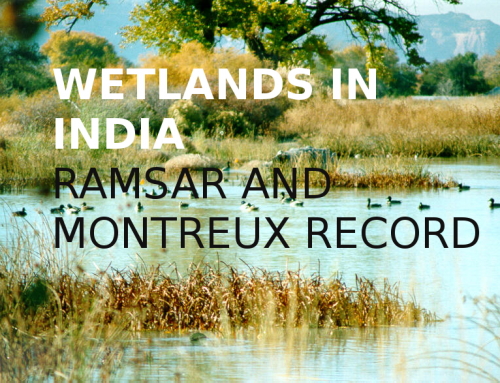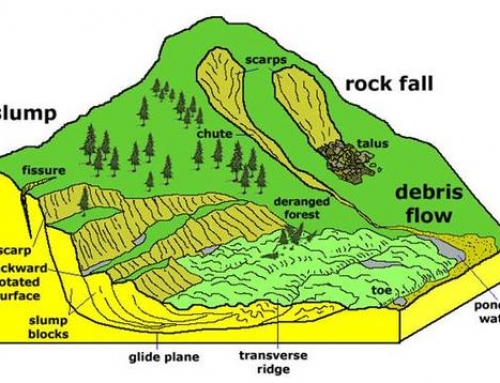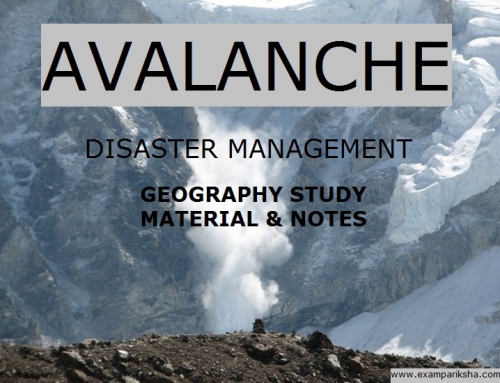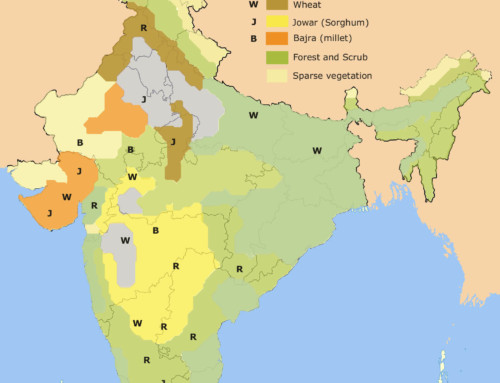India is the seventh largest country with 2.4% of total area of the world. Indian Sub-continent includes India, Pakistan, Nepal, Bangladesh and Bhutan, lying totally in northern hemisphere. The physiography of India is unique and is responsible for development of distinctive features in the sub-continent.
The Indian Mainland extends from 8°4′ north and 37°6′ North in length(latitudes). And between 68°7′ East and 97°25′ East in width (longitudes). This makes the North-south extension of 3214 km and East-west extension of 2933 km.
Physiographic divisions in India
- Northern and North-eastern Mountain
- Northern Plain
- Peninsular Plateau
- Indian Desert
- Coastal Plains
- Islands
<< Read about Basic structure of Constitution>>
I. Northern and North-eastern Mountains Structure:
The general orientation of great Himalayas is from North-west to Southwest direction(in Northwestern region). In Nagaland, Manipur and Mizoram, the himalyas are oriented in North-South direction.
Himalyas are physical as well as Climatic, drainage and cultural divide.
The sub-divisions of Himalayas:
- Kashmir Himalayas: Karakoram, Ladakh, Zaskar, Pir Panjal ranges. The North-Eastern Part of kashmir himalayas is Cold Desert between Greater Himalyas and karakoram ranges. Kashmir valley lies between great himalyas and Pir Panjal and Dal Lake. Karewa formations occur in the Kashmir valley, highly conductive to saffaron cultivation of zafran variety. Freshwater lakes in Kashmir Himalayas are Dal and Wular lakes. Pangong Tso and Tso Moriri are the salt water lakes. The rivers passing through this part of Himalayas are Jhelum, Chenab.
- Himachal & Uttaranchal Himalayas: Between Ravi river in west and Kali river in the east, This part of Himalayas is drained by Indus and Ganga river systems. The Northernmost part of Himacahl Himalayas is an extension of ladakh cold desert, in Spiti sub-division of Lahul and Spiti. It consists of Great Himalayan, the Lesser Himalayas and Shiwalik range from north to south, locally called Dhaoladhar in Himachal Pradesh and Nagtibha in Uttarakhand. ‘Shiwalik’ and ‘Dun formations’ are features of this part of Himalayas. All five Prayags are located here.
- Darjiling and Sikkim Himalayas: It consists of Nepal Himalyas in the west and Bhutan himalyas in east. Though this part is small but significant. Tista is the fast flowing river here. Kanchenjunga peak(Kanchengiri) and deep valleys. Lepcha tribes in high up regions. This area is characterised by absence of Shiwalik formations. In place of them, there are ‘duar formations’ which are useful for tea garden development.
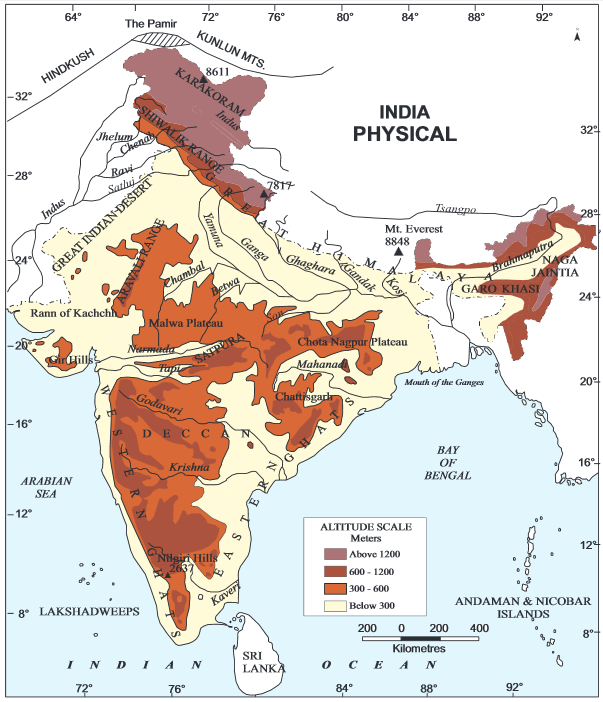
- Arunachal Himalyas: Absence of Shiwalik formations. From east of Bhutan Himalyas up to Diphu pass in east. Direction of ranges is from southwest to Northeast. Kangtu and Namcha Barwa are important mountain peaks. Brahmaputra flows through a deep gorge after crossing Namcha Barwa. This region is rich in biodiversity is preserved by indigenous communities. No inter-valley transportation linkages due to rugged topography. Most interactions occur through duar region along Arunachal and Assam border.
- Eastern Hills and Mountains: They have their alignmnet from North and South. The Barak river in Manipur and Mizoram. Manipur has large lake named as ‘Loktak’ at the centre surrounded by mountains from all sides. Mizoram area is known as ‘Molassis Basin’ is made up of soft unconsolidated deposits. Rivers in Nagaland form tributary of Brahmaputra. Barak river is tributary of Meghna. Rivers in eastern part of Manipur are tributaries of Chindwin, which is tributary of Irrawady of Myanmar.
<< Read about the process of Government Budgeting here>>
II. Northern Plains Physiology of India:
They are formed by alluvial deposits brought by rivers – Indus, Ganga, Brahmaputra. The Northern Plains extend 3200 km from east to west in Indian Physiography. The Maximum depth of alluvium deposits from 1000-2000 km. Three zones from North to South – Bhabar(narrow belt parallel to Shiwalik foothills at slope break-up), Tarai(They are situated in south of bhabar, re-emerge without having any properly demarcated channel, this region has luxurious growth of natural vegetation), Alluvial plains(located to the south of Tarai, mature stage of fluvial erosional and depositional landforms like sand bars, meanders. It is divided into Khadar and Bhangar).
III. Peninsular Plateau in Physiography of India:
Oldest and most stable landmass of India, general elevation from West to East. Important physiographic features are tors, block mountains, rift valleys, spurs, bare rocky structures, series of hummocky hills and wall-like quartzite dykes offering natural site for water storage. The western and northwestern region has emphatic presence of black soil.
Peninsular plateau is extended till Jaisalmer in west, where it is covered by longitudinal sand ridges and crescent shaped sand dunes called Barchans. Metamorphic chan history by presence of metamorphic rocks such as marble, slate, gnesiss, etc.
The Peninsular Plateau is divided into three groups:- Deccan Plateau, Central Highlands and Northeastern plateau.
- The Central Highlands: extends from Narmada river to northern plains, bounded by Aravalis in west and Satpura range in south. Malwa and Chhotanagpur Plateau are art of central highlands. Eastern extension of Central Highlands is formed by Rajmahal hills.
- Deccan Plateau: It is separated by a fault from ChhotaNagpur Plateau. The balck soil area of Deccan Plateau is known as Deccan trap, which is formed by volcanic activity and supports Sugarcane and cotton cultivation. It has Western and Eastern ghats. Both the Ghats meet each other at Nilgiri hills.
- Northeastern Plateau: It is basically an extension of the main peninsular plateau. It comprises of Meghalaya and Karbi Anglong plateau which are detached from the main block. The Meghalaya plateau is divided into three parts- Garo hills, Khasi hills and Jaintia hills. The Meghalaya plateau receives maximum rainfall and stands devoid of any permanent vegetation cover. It is also rich in mineral resources.
IV. Indian Desert – Indian Physiography:
The Indian desert is located in the northwest part of Aravali hills, also known as Thar desert. It is 9th largest desert in the world. The rainfall recieved is below 150 mm per year. The vegetation in the Thar is semi-arid type with thorny bushes. The rivers are ephemeral and only Luni is a significant river.
V. Coastal Plains – Physical features of India:
The coastal plains in India are situated parallel to the Arabian Sea and Bay of Bengal. On the basis of location and active geomorphic processes, it is divided into Western and eastern Coastal Plains.
1. The Western Coastal Plain – Extends from Rann of Kachchh to Kanyakumari. It has four divisions:
- Kachchh & Kathiawar coast in Gujarat
- Konkan coast in Maharashtra
- Goan coast in Karnataka
- Malabar coast in Kerala(has backwaters aka ‘kayal’)
The western coast is narrow in middle and gets broader in north and south. The rivers in Western Coast do NOT form DELTA.
2. Eastern Coastal Plain – extends along the Bay of Bengal. It is broader than the western counterpart. It is an emergent coastal plain, hence has less number of ports and harbours. The Eastern Coast has well-developed deltas in Mahanadi, Godavari, Krishna, and Kaveri. The continental shelf extends upto 500 km into Sea.
<< Read about list of major ports in India here>>
VI. The Islands in India :
In the physiography of India, there are two major Island groups. They are in Bay of Bengal and Arabian Sea. The Bay of Bengal Island group are 204 in number known as Andaman and Nicobar Islands. The Andaman is in North and Nicobar is in South of each other, they are separated by “Ten degree Channel”. The coastal line of these islands has coral deposits and beautiful beaches. They have equatorial type of vegetation.
The Arabian sea Group is known as Lakshadweep and Minicoy Islands. They are located near the Malabar coast. They are built entirely on coral deposits. Out of the 43 islands, Minicoy is the largest.


